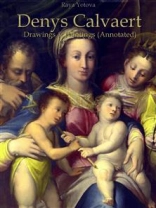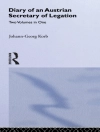Denys Calvaert was lived in Italy for almost entire of his living, where he was branded as Fleming. He was an intense learner of history, architecture and human anatomy, and his paintings are described by their superior structural composition and rich colors.
Denys Calvaert learning the art of paintings landscapes in his youth in his native town Antwerp under the master-painter Christiaen van Queecborn.
The young painter after then went to Italy, Bologna, where practiced under i...
Denys Calvaert was lived in Italy for almost entire of his living, where he was branded as Fleming. He was an intense learner of history, architecture and human anatomy, and his paintings are described by their superior structural composition and rich colors.
Denys Calvaert learning the art of paintings landscapes in his youth in his native town Antwerp under the master-painter Christiaen van Queecborn.
The young painter after then went to Italy, Bologna, where practiced under italian artist Prospero Fontana. His works obtained the Mannerism of Flemish style and emerged to be the paintings of a native Italian artist. From here Calvaert moved to Rome and here he helped Lorenzo Sabbatini for frescoes in the palace of Pope in the Vatican. In Vatican he worked many hours daily to learning the masterpieces of Raphaelo.
Calvaert came back to Bologna and established his own studio where he gathered around many of outstanding students like Francesco Albani Guido Reni and Domenichino. A number of famous young Italian painters as well painted in his master’s studio, prior to moving to the studio of his pupil Reni. Calvaert was admired by the citizens in Bologna and by artists in the town.
He as rule painted “chiaroscuro” techniques to put utilized forefront human figures obtained mainly from Italian artist Correggio alongside Flemish landscape background. Calvert’s employ of colors as well mirrors the manner of Italian Barocci. At the same time as continuing to follow a Mannerism, he was a important donor to the product of Classicism that came to distinguish the Bolognese style of art from the beginning of the new century.












